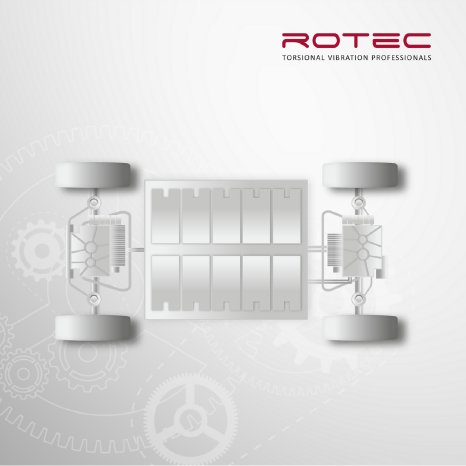The switch to electromobility is picking up speed. Already today, 10.9 million e-cars (2020) roll across the globe worldwide and this number will increase to 34 million by 2030 (Ceresana forecast). E-powertrain development focuses on electric storage capacity, e-motor weight and size, as well as durable powertrain components, ride comfort, and thus silent driving. Standard NVH analysis systems use airborne and structure-borne sound signals to investigate the generated noise, vibrations and their transmission paths. However, these usually ignore the mechanism of how these effects are generated.
In Rotec's case study, it becomes clear that the acoustic behavior of the powertrain is, among other things, influenced by torsional vibration effects of transmission components and electric motor. In addition, increased torsional vibrations due to feedback effects such as road unevenness or driving safety systems (ABS) were found to result in dynamic loads on the electric drivetrain. Investigated parameters and recommended solutions are explained in the case study.
The case study can be downloaded from the news section of the website https://www.rotec-munich.de/en/news-en/.

